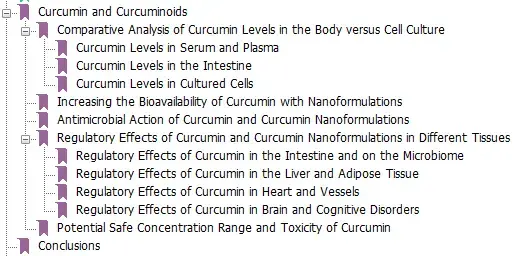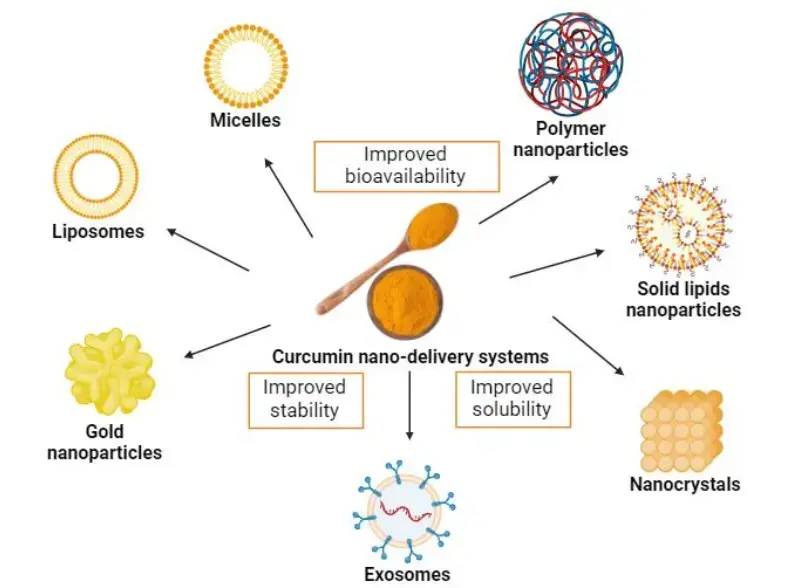Curcumin
items in Curcumin category - see also Supplements
Enhancing the Bioavailability and Bioactivity of Curcumin for Disease Prevention and Treatment - March 2024
Table of Contents


📄 Download the PDF from Vitamin D Life
Curcumin fights many health problems when it is more bio-available – June 2023
Pharmacological Mechanisms and Clinical Applications of Curcumin: Update
Aging Dis. 2023 Jun 1;14(3):716-749. doi: 10.14336/AD.2022.1101.
Min Hao 1, Yue Chu 1, Jingxuan Lei 1 2, Zhouhui Yao 1, Pingping Wang 1, Ziyan Chen 1, Kuilong Wang 1, Xianan Sang 1, Xin Han 1, Lu Wang 1, Gang Cao 1


Curcumin, a well-known hydrophobic polyphenol extracted from the rhizomes of turmeric (Curcuma longa L.), has attracted great interest in the last ten years due to its multiple pharmacological activities. A growing body of evidence has manifested that curcumin has extensive pharmacological activities including anti-inflammatory, anti-oxygenation, lipid regulation, antiviral, and anticancer with hypotoxicity and minor adverse reactions. However, the disadvantages of low bioavailability, short half-life in plasma, low drug concentration in blood, and poor oral absorption severely limited the clinical application of curcumin. Pharmaceutical researchers have carried out plenty of dosage form transformations to improve the druggability of curcumin and have achieved remarkable results. Therefore, the objective of this review summarizes the pharmacological research progress, problems in clinical application and the improvement methods of curcumin's druggability. By reviewing the latest research progress of curcumin, we believe that curcumin has a broad clinical application prospect for its wide range of pharmacological activities with few side effects. The deficiencies of lower bioavailability of curcumin could be improved by dosage form transformation. However, curcumin in the clinical application still requires further study regarding the underlying mechanism and clinical trial verification.
📄 Download the PDF from Vitamin D Life
Some of the Health Problems fought by Curcumin (are also fought by Vitamin D)
Overweight and obesity
Metabolic syndrome
Nonalcoholic fatty liver disease
Depression and anxiety in diabetic patients with peripheral neuropathy
Type 2 diabetes
Alzheimer disease
Schizophrenia
Prostate cancer
Cancer
Polycystic ovary- syndrome
Non-Alcoholic Fatty Liver Disease (NAFLD)
Curcumin benefits - 2020

- Turmeric and Its Major Compound Curcumin on Health: Bioactive Effects and Safety Profiles for Food, Pharmaceutical, Biotechnological and Medicinal Applications - 2020 📄 PDF
Curcumin articles
{category}
Tumeric-Curcumin products review - June 2023 Consumerlab
Consumerlab has a free trial subscription 100+ supplement reviews
58 page review includes effectivness studies, bio-availablity studies ( up to 185X), high-dose toxicity, cost, etc
see Excellent reviews of supplements at ConsumerLab
When not to take curcumin - 2018
Turmeric: potential adverse effects and interactions _
Turmeric and curcumin seem to be generally well tolerated. The most common side effects observed in clinical studies are gastrointestinal and include constipation, dyspepsia, diarrhoea, distension, gastroesophageal reflux, nausea, vomiting, yellow stool and stomach ache.
Due to their ability to increase bile secretion, turmeric and curcumin should not be taken by individuals with obstruction of the bile duct, cholangitis, liver disease, gallstones and any other biliary disease.
Turmeric has also been linked to interactions with some conventional medicines due to its influence on some cytochrome P450 enzymes, P-glycoprotein and OATP transporters.
Patient’s taking medicines with a narrow therapeutic index or, associated with significant side effects, e.g. anticancer or immunosuppressant agents should use turmeric and curcumin with caution.
Piperine (pepper) added to Curcumin makes it 20X more bioavailable
Turmeric with Black Pepper: What It’s Good For and How to Take It Dr, Greger video April 2022
"Approximately 5 percent of the spice turmeric is composed of an active compound called curcumin, which is responsible for turmeric’s bright yellow color."
"About 5 percent of black pepper by weight is comprised of piperine, a compound that gives the spice its pungent flavor. Piperine is a potent inhibitor of drug metabolism. One of the ways our liver gets rid of foreign substances is by making them water soluble so they can be more easily excreted. But, this black pepper molecule inhibits that process."
"And guess what a common ingredient in curry powder is besides turmeric? Black pepper."
Turmeric is as Effective as 14 Drugs (Turmeric is related to Curcumin) - March 2021
900 Reasons Turmeric May Be the World's Most Important Herb - April 2023
Curcumin was associated with Omega-3 7, Supplement 4, Zinc 4, Resveratrol 4, Magnesium 3, Vitamin K 3, Boron 3, Iodine 3, Vitamin B12 3, Vitamin C 3
as of July 2024 - click for details
Close Associations
